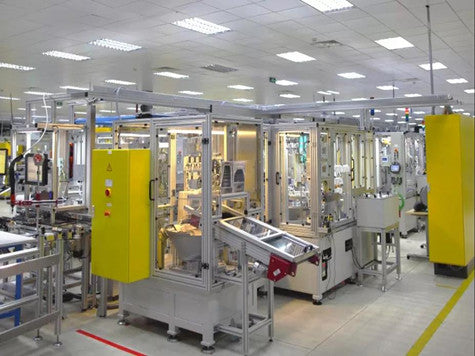What is the difference between DCS and PLC? (1)
- August 23, 2021
1. From the perspective of development:
DCS evolved from the traditional dashboard monitoring system. Therefore, DCS is inherently more focused on instrument control, such as YOKOGAWACS3000, DCS system does not even have a limit on the number of PIDs (PID, proportional-differential-integral algorithm, is the standard algorithm for closed-loop control of regulating valves and inverters, usually the number of PIDs Determines the number of control valves that can be used).
PLC developed from the traditional relay circuit. The original PLC did not even have the ability to process analog quantities. Therefore, the PLC emphasized the logic operation ability from the beginning.
2. In terms of system scalability and compatibility:
There are many control products on the market, no matter whether DCS or PLC, many manufacturers are producing and selling. For PLC systems, there is generally no or very little need for expansion, because PLC systems are generally used for equipment. Generally speaking, PLCs rarely have compatibility requirements. For example, two or more systems require resource sharing, which is also very difficult for PLCs. Moreover, PLCs generally use a dedicated network structure, such as Siemens' MPI bus network, and even adding an operator station is not easy or costly.
In the process of development of DCS, each manufacturer has established its own system, but most of the DCS systems, such as Yokogawa, Honeywell, ABB, etc., although the internal communication protocol (process level) of the system is not the same, but the operation The high-level network platform unanimously chooses Ethernet, using standard or modified TCP/IP protocol. This provides a very convenient scalability. In this kind of network, both the controller and the computer exist as a node. As long as the network reaches the place, the number of nodes can be added or deleted and the location of nodes can be arranged at will. In addition, based on open protocols such as OPC and DDE of the Windows system, various systems can also communicate easily, and resource sharing has been realized.
3. From the database:
DCS generally provides a unified database. In other words, once a data exists in the database in the DCS system, it can be referenced under any circumstances, such as in the configuration software, in the monitoring software, in the trend chart, in the In the report... and the database of the PLC system is usually not unified, the configuration software, monitoring software and even the archiving software have their own databases. Why is it often said that Siemens S7-400 is called DCS only after it reaches 414 or higher, because Siemens PCS7 system uses a unified database, and PCS7 requires the controller to be at least S7414-3 or higher.
| T8444 | IC695RMX128 | FCM10E | AAI143-S03/A4S00 |
| T8100C | DS200PCCAG5ACB | P0972VA ATS | AAI543 |
| T8833C | DS200LDCCH1 DS200LDCCH1ALA | P0903CW | AAI543-H00 |
| T8121C | IC693BEM340 | FBM215 | AAI543-H00 S1 |
| TC20902 | IS200TRLYH1BED | FBM201 P0914SQ | AAI543-H00/K4A00 |
| T8841 | IS2020RKPSG3A | BO123HE | AAI543-H03 |
| T83124C | DS200DDTBG2ABB | P0972VA | AAI543-S00 |
| T8153C | IC752WFC555-EC | FBM237 P0914XS | AAI543-S00 S1 |
| TC32301 | 531X123PCHACG1 | FBI10E | AAI543-S00/A4S00 |
| T8201 | DS200TCQAG1BGE | FBM242 P0916TA | AAI543-S03/A4S00 |
| T8295 | DS3800NGDD1C1B | FBM207c | AAI835 |

